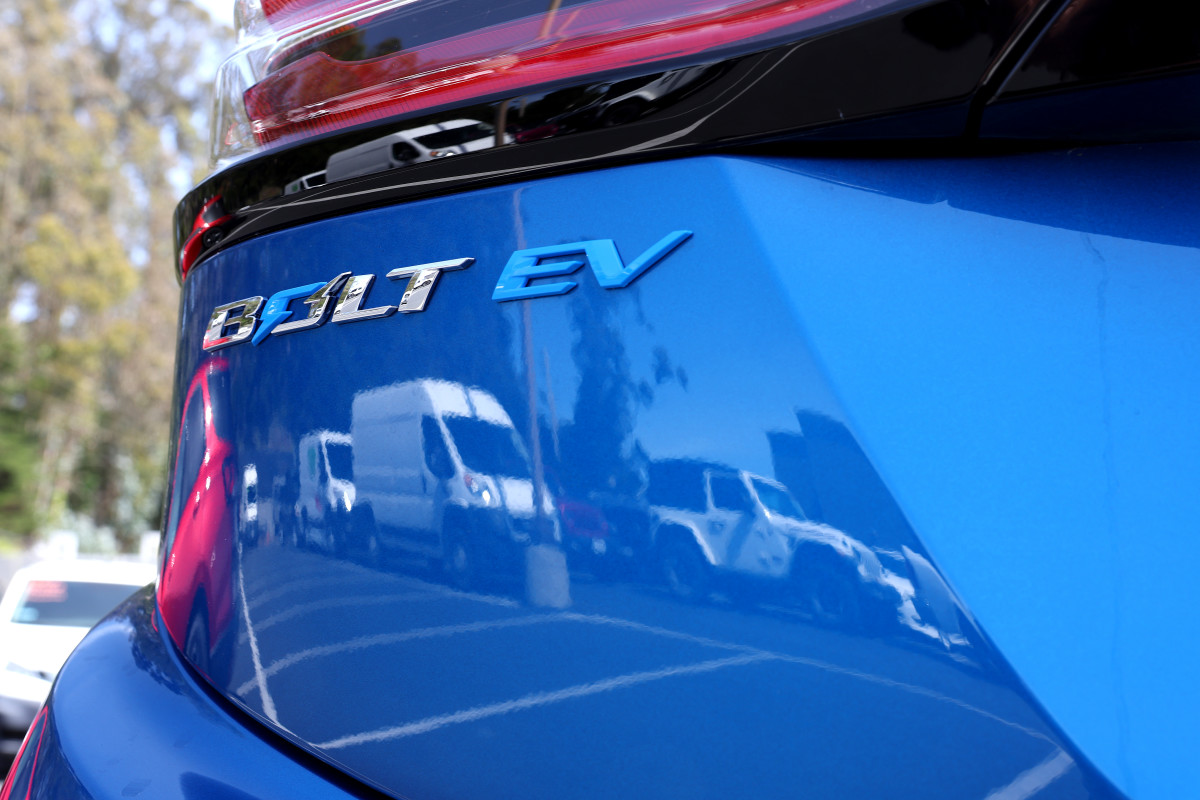According to its third-quarter earnings report released Oct. 21, General Motors GM successfully rode the tariff wave to its most substantial U.S. market share since 2017.
The Detroit Big 3 stock closed Oct. 21’s trading session up 14.9% to $66.62 following the earnings release before the opening bell.
GM reported a 17% U.S. market share, thanks to record crossovers and SUV sales mixed with record EV sales. The company sold 67,000 electric vehicles in the quarter, garnering 16.5% of EV market share.
Dealer inventory fell 16% year over year in the quarter, with EV inventory down almost 30% since June.
The strong quarter led GM to raise its profit guidance to between $9.75 and $10.50 per share for the year, up from its previous view between $8.25 and $10 per share.
For the period, GM reported earnings of $2.80 per share on revenue of $48.59 billion. Analysts expected the company to report earnings of $2.30 per share on revenue of $45.04 billion.
However, even though GM EVs had a strong quarter, the company said it will halt the expansion of its electrified portfolio.

Sullivan/Getty Images
GM says its EV production will adapt to “evolving regulatory landscape”
While GM CEO Mary Barra praised President Donald Trump for the recent tweaks to auto tariffs that will save the company a lot of money, she also acknowledged that changes to emission regulations will cost the company big time.
Over the past several years, our portfolio and capacity plans have been shaped by steadily increasing regulatory stringency for fuel economy and emissions.
GM CEO Mary Barra
“To meet these requirements, we aggressively expanded our electric vehicle capacity,” Barra added. “However, with the evolving regulatory framework and the end of federal consumer incentives, it is now clear that near-term EV adoption will be lower than planned. That is why we are reassessing our EV capacity and manufacturing footprint.”
GM already stated in an 8-K filing earlier this month that it will lose $1.6 billion due to “the termination of certain consumer tax incentives for EV purchases and the reduction in the stringency of emission regulations.”
Related: General Motors deals billion-dollar blow to the EV industry
In a bad sign for the U.S. EV industry, GM believes consumer demand will collapse without government incentives, so it needs to make fewer EVs to right-size production.
With changing attitudes in Washington, Barra now says GM expects to sell internal combustion engine vehicles for longer, but it is not abandoning its EV strategy altogether.
She told analysts on the earnings call, asking about EV, that GM will focus on “cost reduction, maintaining production discipline, and leveraging new battery technologies. We aim to improve EV profitability by reducing complexity and commonizing parts across our EV platform.”
U.S. is having a banner year for EVs, but GM doesn’t expect the good times to last
The U.S. EV market has had a record-setting year so far in 2025, but part of that was driven by the fact that it will be harder to sell EVs, now that the government is no longer offering a $7,500 tax credit for buying those vehicles.
U.S. EV sales by year + market share of new vehicle sales:
- 2025 (through September): Over 1 million units, 10.5% market share
- 2024: 1.3 million, 8.1% market share
- 2023: 1.2 million, 7.8% market share
- 2022: 800k, 5.8% market share
Source: Cox Automotive
While on the top line, Tesla, GM, Ford and others all sold a record amount of EVs in the U.S. in the third quarter, peeking under the hood reveals some concerning issues with the overall health of the industry.
Consumers purchased 90 different EV models in the third quarter, but only nine sold more than 10,000 units.
Tesla TSLA Model Y and Model 3 were ahead of the pack, selling more than 114,000 and 53,000, respectively, and the Chevy Equinox sold just under 25,000.
But those three models were outliers.
According to Cox Automotive, “the vast majority of EVs sell at a rate of far less than 2,000 units a month, or 6,000 units a quarter. In the volume-driven business of automotive manufacturing, low volume is the enemy; EV profitability remains a distant dream for nearly every automaker.”
Related: General Motors has an unlikely ally in race against China
#CEO #Mary #Barra #crucial #update #stock #jumps